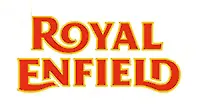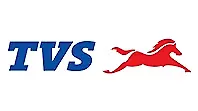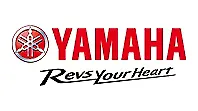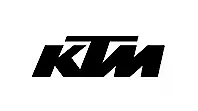The UPSC CDS Syllabus: For Indian Military Academy (IMA), Indian Naval Academy (INA) & Air Force Academy (AFA)
Understanding this syllabus is like knowing the battlefield before the real mission – the better you know it, the stronger your preparation becomes. Below is the detailed explanation of the syllabus.
September 08, 2025 09:17 PM
Every defence dream begins with a challenge – the UPSC Combined Defence Services (CDS) Exam. It’s not just a test of knowledge, but of discipline, focus, and readiness to lead. The syllabus is your map on this journey, covering English for clarity of expression, General Knowledge for awareness of the world you’ll serve, and Mathematics for logical problem-solving. And beyond these written papers, the SSB tests your personality, confidence, and leadership.
Understanding this syllabus is like knowing the battlefield before the real mission – the better you know it, the stronger your preparation becomes. Below is the detailed explanation of the syllabus:
- Every year, thousands of defence aspirants dream of wearing the prestigious uniform of the Indian Armed Forces. The first step in this journey is the UPSC Combined Defence Services (CDS) Exam – a gateway to IMA, INA, AFA and OTA.
UPSC CDS Exam Patter
The UPSC CDS Syllabus (Combined Defence Services Examination) is divided into two parts – Written Examination and SSB Interview (Intelligence & Personality Test).
1. For Indian Military Academy (IMA), Indian Naval Academy (INA) & Air Force Academy (AFA)
- Written Exam Subjects:
- English – 100 marks
- General Knowledge – 100 marks
- Elementary Mathematics – 100 marks
- Total Marks (Written): 300
- Time for Each Paper: 2 hours
- Type: Objective (MCQs)
2. For Officers’ Training Academy (OTA)
- Written Exam Subjects:
- English – 100 marks
- General Knowledge – 100 marks
- Total Marks (Written): 200
- Time for Each Paper: 2 hours
- Type: Objective (MCQs)
3. SSB Interview / Personality Test
- For IMA, INA, AFA – 300 marks
- For OTA – 200 marks
The UPSC CDS Syllabus
Every year, thousands of defence aspirants dream of wearing the prestigious uniform of the Indian Armed Forces. The first step in this journey is the UPSC Combined Defence Services (CDS) Exam – a gateway to IMA, INA, AFA and OTA.
To succeed, understanding the CDS syllabus is just as important as knowing the exam pattern. The syllabus acts as your roadmap, guiding you through English, General Knowledge, and Mathematics, along with the personality tests that follow. The clearer your grasp of the syllabus, the sharper your preparation strategy becomes.
A. English Syllabus (100 Marks)
Imagine stepping into the CDS exam hall, and the very first test you face is English. It’s not just about grammar rules or difficult vocabulary, but about how well you can understand, analyze, and express ideas. The English paper, carrying 100 marks, is designed to test your basic comprehension, correct usage, and effective communication skills.
The English paper tests the understanding of the language, vocabulary, grammar, and comprehension skills:
- Vocabulary: Synonyms & Antonyms Word Substitution (one word for a phrase) Homonyms & Homophones Spelling Test
Grammar & Usage Spotting Errors in Sentences Sentence Improvement (choosing the correct form) Fill in the Blanks with correct words Active & Passive Voice Direct & Indirect Speech Tenses, Prepositions, Conjunctions, Articles
3. Comprehension & Reading Skills Reading Passages with questions Understanding the central idea, theme, and facts Inference-based questions Vocabulary from passages
4. Sentence & Structure Jumbled Sentences (Para Jumbles) Sentence Rearrangement for proper order Cloze Test (fill missing words in a passage) Completion of Sentences
5. Idioms & Phrases Meaning of common idioms Usage in sentences
C. Elementary Mathematics Syllabus (100 Marks) (Only for IMA, INA, AFA aspirants, not for OTA) Arithmetic: Number System, HCF & LCM, Simplification, Ratio & Proportion, Percentage, Average, Profit & Loss, Simple & Compound Interest, Time & Work, Time & Distance, Speed, Problems on Ages. Algebra: Basic Operations, Simple Equations, Polynomials, Factorization, Remainder Theorem, Set Theory. Geometry: Lines, Angles, Triangle properties, Circles, Loci. Mensuration: Area & Volume of 2D and 3D figures (Square, Rectangle, Cone, Sphere, Cylinder, etc.). Trigonometry: Basic Identities, Heights & Distances, Sine/Cosine/ Tangent values, Simple problems. Statistics: Bar Chart, Pie Chart, Histogram, Measures of Central Tendency (Mean, Median, Mode).
SSB Interview (Intelligence & Personality Test) After clearing the written exam, shortlisted candidates appear for SSB Interview, which includes: Stage I: Screening Test (Verbal & Non-Verbal Reasoning, Picture Perception, and Description Test). Stage II: Psychological Tests, Group Testing Officer Tasks (Group Discussion, Group Planning Exercise, Progressive Group Tasks, Command Tasks), Interview, and Conference.
The SSB mainly checks Intelligence, Leadership Qualities, Communication Skills, Problem-Solving Ability, and Personality Traits.
👉 Would you like me to also prepare a PDF version of this syllabus (section-wise) that you can keep for study reference?
</aside>
B. General Knowledge Syllabus (100 Marks)
Covers Current Affairs + General Awareness from multiple subjects:Current Events of National & International ImportanceIndian History & Freedom StruggleGeography (Physical, Economic, Social – India & World)Indian Polity & ConstitutionEconomy & Current Economic DevelopmentsDefence-related AwarenessScience & Technology (basic level, everyday science)Environment, Ecology, Biodiversity & Climate ChangeAwards, Sports, Books & Authors, Important Organizations
<aside> 💡
CDS General Knowledge syllabus for UPSC CDS (100 Marks): The GK paper tests a candidate’s awareness of current events, history, geography, polity, economy, science, defence, and environment.
1. Current Affairs National & International Events Government Policies & Schemes Sports & Awards Books & Authors, Important Personalities Summits & Conferences Defence Exercises, Defence Acquisitions Reports, Indexes & Organizations (UN, IMF, World Bank, etc.)
2. Indian History Ancient History: Indus Valley Civilization, Vedic Age, Mauryan & Gupta Empires, Art & Culture Medieval History: Delhi Sultanate, Mughal Empire, Bhakti & Sufi Movements Modern History: British Rule, Revolt of 1857, Social & Religious Reform Movements, Indian National Movement, Freedom Struggle leaders & events.
3. Geography Physical Geography: Earth, Mountains, Rivers, Climate, Soil, Natural Vegetation Indian Geography: States, Resources, Agriculture, Industries, Transport World Geography: Continents, Oceans, Important Countries & Capitals Environmental Geography: Ecology, Biodiversity, Conservation, Climate Change
4. Indian Polity & Constitution Constitution of India: Preamble, Fundamental Rights & Duties, Directive Principles Structure of Government: Parliament, President, Prime Minister, Governor, Supreme Court, High Courts Panchayati Raj & Local Government Important Amendments & Constitutional Developments Political System & Governance in India
5. Indian Economy Basic Economic Concepts (GDP, Inflation, Budget, Banking, Taxation) Economic Planning in India (NITI Aayog, Five-Year Plans – basics) Agriculture, Industries, Infrastructure Current Economic Developments & Government Initiatives International Trade & Organizations (WTO, IMF, World Bank, BRICS, etc.)
6. Science & Technology Physics, Chemistry, Biology (basic, everyday science level – Class 9–10 standard) Human Body, Diseases, Nutrition, Vaccines Space Technology & Defence Technology Computers, IT, Artificial Intelligence, Robotics Recent Scientific Developments
7. Defence Awareness Structure of Indian Armed Forces (Army, Navy, Air Force) Ranks, Commands & Headquarters Defence Exercises (National & International) Defence Weapons & Missiles Current Developments in Defence Sector
8. Environment & Ecology Ecology, Ecosystem, Food Chain, Food Web Environmental Issues (Pollution, Deforestation, Climate Change) Wildlife & Biodiversity Conservation National Parks, Sanctuaries, Ramsar Sites International Environmental Agreements (Paris Agreement, Kyoto Protocol, etc.)
</aside>
User Comments (1)
"addd54@gmail.com"
addd54@gmail.com
4 weeks ago
vzfdsadfsdfsdfsdfs
 Royal Enfield
Royal Enfield
 TVS
TVS
 Yamaha
Yamaha
 KTM
KTM